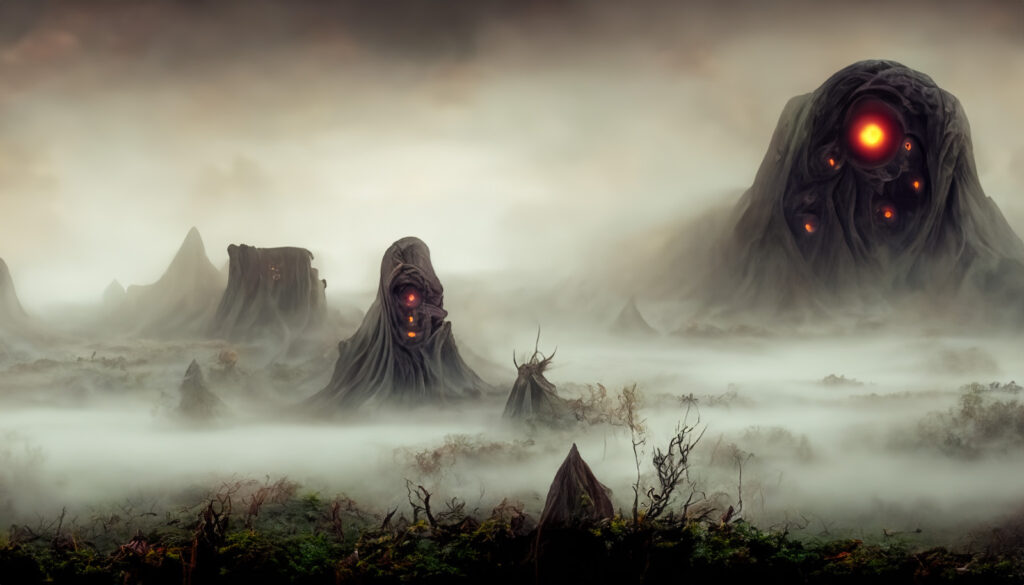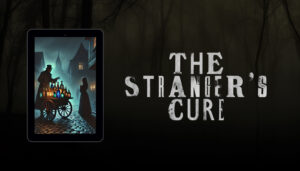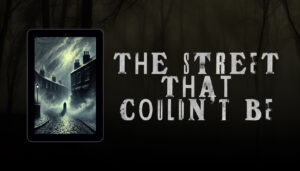Have you ever found yourself drawn into the chilling depths of a dark fantasy or horror story, only to be terrified by the villain lurking in the shadows?
In the dark corners of our imagination, fear takes on a life of its own, twisting and contorting reality into nightmarish visions.
But what is it about villains in dark fantasy and horror stories that strike such terror into our hearts? Well, that’s what this article’s going to explore. Enjoy.
The Psychology of Fear: Understanding What Makes Villains Truly Terrifying
To understand the psychology of fear, we must first peel back the layers of darkness that shroud these malevolent characters.
At the core of what makes villains terrifying lies in manipulating our primal fears and deep-seated anxieties.
Dark fantasy and horror authors tap into universal human fears—fear of the unknown, fear of death, fear of loss—and amplify them to monstrous proportions.
Whether it’s the lurking shadow in the closet or the whispering voice in the darkness, villains embody our darkest nightmares, bringing them to life in chilling detail.
But it’s not just the presence of villains that sends shivers down our spines; it’s their motives and methods that unsettle us.
From the sadistic pleasure derived from inflicting pain to the insatiable thirst for power and control, villains embody the darkest aspects of human nature.
They are the personifications of our deepest fears and insecurities. The villains manifest themselves into physical forms they use to torment and terrify us.
Yet, despite the terror they inspire, villains also hold a mirror on our own humanity. They force us to confront our darkest impulses and deepest fears, challenging us to confront the darkness within ourselves.
In doing so, they become more than mere antagonists; they become symbols of our own inner demons, haunting us long after the last page turns. Here’re some examples of some literary villains we all love to hate.
- The malevolent Pennywise from Stephen King’s “It,” who preys on the fears of children, manifesting as their worst nightmares.
- The insidious and manipulative Nurse Ratched from Ken Kesey’s “One Flew Over the Cuckoo’s Nest,” whose calculated cruelty instils fear and obedience in her patients.
- The seductive and cunning Dracula from Bram Stoker’s “Dracula,” whose otherworldly charm conceals his insatiable thirst for blood and eternal life.
Creating Tension: The Key to Keeping Readers on the Edge of Their Seats
In the dark realms of dark fantasy and horror, tension is the lifeblood that pulses through every page.
But what is it that makes tension so effective in captivating our imaginations and holding us in its grip?
At its core, tension results from a delicate balance between anticipation and uncertainty. Dark fantasy and horror authors manipulate this balance, weaving a web of suspense and dread that tightens with each turn of the page.
One of the most potent tools in a writer’s arsenal for creating tension is the use of foreshadowing and symbolism.
By planting subtle hints and clues throughout the narrative, authors sow the seeds of unease in the reader’s mind, building anticipation for the horrors yet to come.
From the ominous creaking of floorboards to the flickering of candlelight casting long shadows on the wall, every detail serves to heighten the sense of impending dread.
But tension is not just about what lurks in the shadows; it’s also about what remains unseen. These stories leave readers grappling with their own fears and imaginations as they fill in the gaps with their worst nightmares.
Whether it’s the unseen monster lurking just out of sight or the mysterious figure watching from the shadows, the fear of the unknown is a potent force that keeps readers glued to the page, desperate to uncover the truth.
Creating tension is as much an art as it is a science, requiring a delicate balance of pacing, atmosphere, and narrative tension. By mastering the art of tension, authors can transport readers to the darkest depths of their imagination. Fear reigns supreme, and the line between reality and nightmare blurs into nothingness.
Do these examples ring any bells?
- The slow-burning tension of Shirley Jackson’s “The Haunting of Hill House,” where the oppressive atmosphere of the titular house builds with each eerie occurrence.
- The relentless psychological tension of Thomas Harris’s “The Silence of the Lambs,” as FBI agent Clarice Starling matches wits with the brilliant but monstrous Dr. Hannibal Lecter.
- The atmospheric tension of Algernon Blackwood’s “The Willows,” where two friends on a canoe trip find themselves at the mercy of unseen forces in the wilderness.
The Power of Antagonists: How Memorable Villains Elevate Dark Fantasy Classics
In the vast tapestry of dark fantasy and horror literature, villains rule as the architects of terror.
But what is it about these malevolent characters that make them so unforgettable, so iconic, that they become synonymous with the genre itself?
One of the defining characteristics of memorable villains is their complexity and depth. Far from being one-dimensional forces of evil, these antagonists possess motivations, flaws, and vulnerabilities that make them more terrifying.
Perhaps it’s the tragic descent of madness of a once noble character. Or is it the insidious manipulation of a cunning sociopath? Whichever route the author takes, memorable villains challenge our perceptions of what it means to be good and evil.
Think about the charm of a vampire or the primal terror of an ancient evil awakening from its cursed sleep. These villains tap into our deepest fears and darkest fantasies, leaving an indelible mark on our psyche that refuses to fade with time.
In the end, the power of memorable villains lies in their ability to transcend the pages of the story and become larger-than-life symbols of the human condition.
They are the embodiment of our darkest impulses and deepest fears, reminding us that sometimes the greatest monsters lurk not in the shadows, but within ourselves.
Have you read these popular examples?
- The haunting presence of Annie Wilkes in Stephen King’s “Misery,” whose fanatical obsession with her favourite author transforms her into a terrifying force of nature.
- The enigmatic and otherworldly Slender Man, whose legend has inspired countless works of horror fiction and urban folklore, blurring the lines between myth and reality.
- The relentless pursuit of the titular antagonist in Richard Matheson’s “I Am Legend,” whose vampiric hordes try to extinguish the last remnants of humanity in a post-apocalyptic world.
Crafting Compelling Villains: Lessons from Literary Masters of Horror
In the dark annals of horror literature, villains loom large as the architects of terror, their malevolent presence casting a shadow of fear over readers for generations.
One example is the tragic figure of Frankenstein’s monster. Another would be the eldritch horrors of Lovecraftian lore. These memorable villains possess motivations, flaws, and vulnerabilities that make them so loved by horror readers throughout time.
Another lesson we can glean from literary masters of horror is the power of atmosphere and setting in shaping the villain’s character.
What’s worse? The claustrophobic confines of a crumbling mansion or the vast, unfathomable depths of space? The environments in which villains live play a crucial role in shaping their identity and impact on the narrative.
But perhaps the most important lesson of all is the need to push the boundaries of imagination and explore the unknown.
Literary masters of horror like H. P. Lovecraft understood the power of cosmic horror. The fear of the unknown and the incomprehensible unsettle and terrify readers in ways that more conventional villains could not.
Crafting interesting villains is as much an art as it is a science, requiring a keen understanding of human nature, a mastery of atmosphere and setting, and a willingness to push the boundaries of imagination.
Why not add some of these examples to your TBR list?
- The cosmic horrors of H. P. Lovecraft’s “The Call of Cthulhu,” whose mere existence drives mortals to madness in their attempts to comprehend the incomprehensible.
- The tragic figure of Heathcliff in Emily Brontë’s “Wuthering Heights,” whose brooding presence and dark past make him an interesting and complex antagonist.
- The relentless pursuit of the Overlook Hotel in Stephen King’s “The Shining,” whose malevolent influence transforms the building itself into a living entity hell-bent on destruction.
In summary
What do you think? What do you think is the key ingredient in creating memorable, terrifying villains and monsters? I’d love to hear from you, so make sure you let me know in the comments below.
If you’re not sure, for me, it’s all about making them as diverse and multifaceted as the genres are themselves.
Remember. The true power of villains lies not only in their ability to terrify. It lies in their capacity to challenge and inspire us to confront our own fears and desires.
So, as you embark on your own reading journey into the unknown, I hope you find the courage to face your inner darkness.
See you soon.



